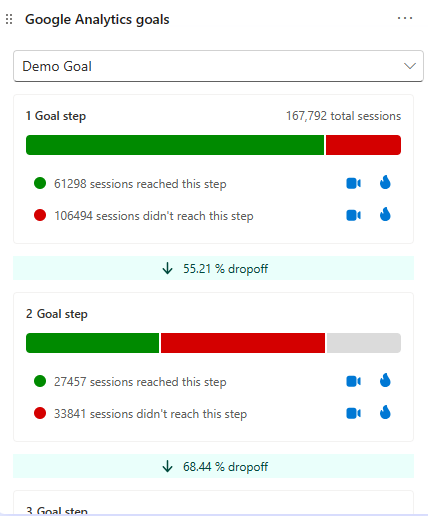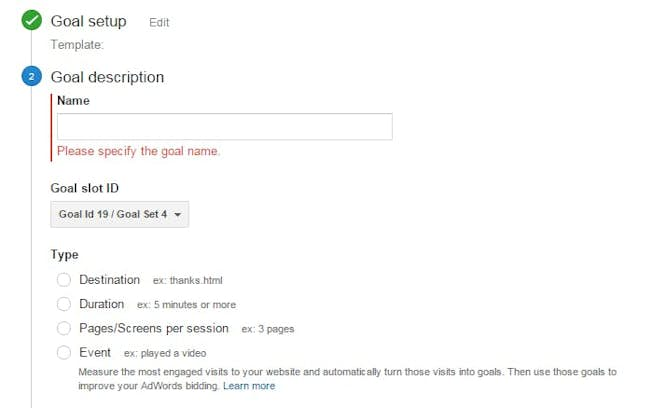Debunking Google Analytics Limitations: Uncover What Data Goals Can not Track
In the realm of digital analytics, Google Analytics stands as a powerful tool that offers valuable insights into web site efficiency and user actions. Nevertheless, in the middle of its capabilities, there exist limitations that commonly go unnoticed. Comprehending what Google Analytics can not track is important for a thorough grasp of data analysis and decision-making procedures. From the ins and outs of individual interaction with vibrant web content to the intricacies of cross-device user trips, these limitations lost light on locations that might continue to be obscured from conventional analytics viewpoints. By unwinding these restrictions, a more clear photo emerges, allowing for even more enlightened techniques and improved insights right into customer engagement and conversions.

Individual Communication With Dynamic Material
User interaction with vibrant material plays an essential duty in comprehending user actions on websites and enhancing the general customer experience. By tracking user interactions with dynamic material, website owners can gain useful insights into user involvement, choices, and behaviors - what data is google analytics goals unable to track.
Google Analytics provides various devices to track customer interactions with vibrant material, such as occasion tracking and online pageviews. Event monitoring enables you to check details customer activities, like clicking a button or viewing a video, providing data on exactly how customers engage with vibrant elements.
Cross-Device User Journeys
Just how can contemporary analytics devices track the facility courses customers take across numerous tools in their online journeys? Cross-device individual journeys present a substantial challenge for monitoring and assessing customer actions properly. As customers connect with applications or websites utilizing different devices such as smartphones, tablets, and desktop computers, it comes to be crucial to comprehend how they move between these platforms to maximize individual experience efficiently.
Google Analytics deals with limitations in tracking cross-device customer trips because of personal privacy worries and technological restrictions - what data is google analytics goals unable to track. While it can offer insights right into specific gadgets' interactions, tracking a smooth individual trip across multiple tools continues to be a difficulty. This constraint can result in incomplete data and fragmented customer understandings, making it tough for companies to create a unified view of the consumer journey
To address this concern, organizations can use advanced analytics devices that use cross-device monitoring capacities, allowing them to acquire an extra all natural understanding of individual habits. By leveraging these devices, organizations can link the gap in tracking cross-device user trips and enhance their electronic methods for a smooth customer experience.
Offline Conversions and Attribution
As organizations browse the obstacles of tracking cross-device individual journeys, another essential facet to think about is the world of offline conversions and acknowledgment in the world of information analytics. While Google Analytics gives beneficial insights into online user actions, it drops short when it pertains to tracking conversions that happen offline. This restriction presents a significant obstacle for businesses that have both online and offline sales networks.
Offline conversions, such as acquisitions made in physical stores or through call centers, are important to recognizing the full client journey. Without the capability to connect these offline conversions to specific on the internet communications, organizations might struggle to properly measure the effect of their electronic advertising and marketing initiatives.
To address this void, organizations can explore different options such as incorporating CRM systems with on-line analytics tools or using special coupon codes that can be traced back to online projects. By linking the gap between online and offline information, companies can acquire an extra extensive understanding of their customers' actions and improve their general advertising and marketing approaches.
Person Individual Identification
In the world of information analytics, the capability to properly identify private users across numerous on the internet touchpoints is a critical difficulty for organizations seeking to customize and maximize their advertising approaches. While Google Analytics offers click here for more important insights right into customer habits and communications, it falls brief in enabling the identification of certain individuals because of personal privacy problems and technical limitations. Google Analytics utilizes unique identifiers such as cookies to track user sessions and habits, but these do not correspond to determining specific customers in here are the findings a personal feeling.

Data From Secure Pages
In spite of the increasing prevalence of secure web pages on internet sites, acquiring information from these encrypted sources presents an unique challenge for electronic analytics systems like Google Analytics. Protect web pages, indicated by HTTPS in the link, encrypt data exchanged between the individual's web browser and the site's web server to guarantee privacy and security. While this encryption is vital for safeguarding delicate information, it likewise positions limitations for tracking user habits and gathering analytics data.
Google Analytics encounters obstacles in gathering detailed details from secure pages as a result of the encryption methods read in position. Consequently, certain information points such as reference resources, keyword searches, and also some customer interactions may not be fully captured when users access a website via a safe and secure connection. This restriction can influence the accuracy and efficiency of the information evaluation, causing gaps in understanding user habits and preferences on safe web pages.
To browse this obstacle, digital analysts might need to explore different monitoring techniques or take advantage of various other devices specifically created to collect understandings from secure web pages. By adapting strategies to suit these limitations, organizations can still acquire important analytics regardless of the restrictions presented by encrypted connections.
Verdict
To conclude, Google Analytics has restrictions in tracking customer communication with vibrant material, cross-device user trips, offline conversions, specific customer recognition, and information from safe pages. These constraints prevent a detailed understanding of customer habits and might bring about spaces in information evaluation. In spite of its important understandings, Google Analytics may not supply a complete image of customer engagement throughout different touchpoints. It is vital for businesses to be knowledgeable about these limitations and take into consideration additional devices for an extra holistic sight of their information.
User interaction with dynamic web content plays a critical role in recognizing individual habits on internet sites and optimizing the overall individual experience. By tracking user communications with dynamic web content, web site owners can acquire useful insights right into customer engagement, choices, and habits.
Google Analytics utilizes one-of-a-kind identifiers such as cookies to track individual sessions and behavior, yet these do not correspond to recognizing private customers in a personal sense.
As an outcome, specific data points such as recommendation resources, keyword searches, and even some individual communications may not be totally caught when users access a site through a safe connection.In verdict, Google Analytics has restrictions in tracking user communication with dynamic web content, cross-device individual journeys, offline conversions, individual customer recognition, and information from safe and secure web pages.